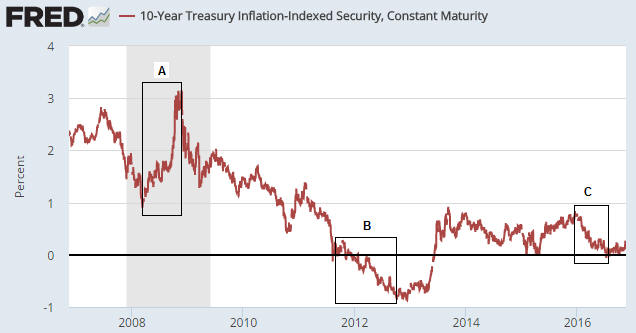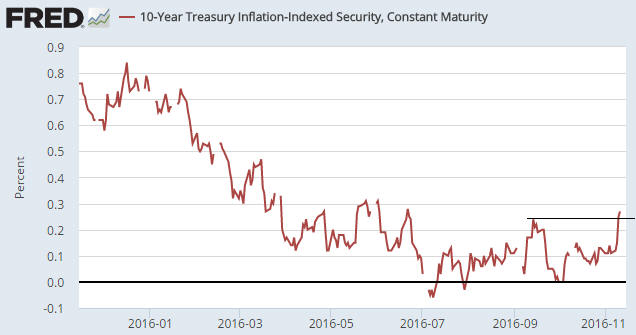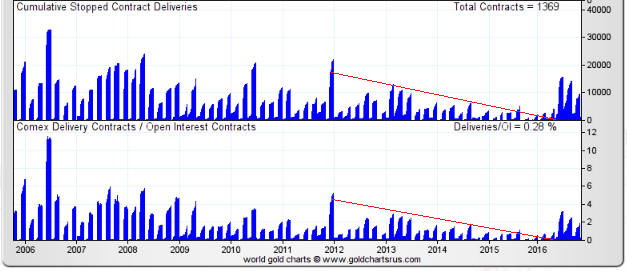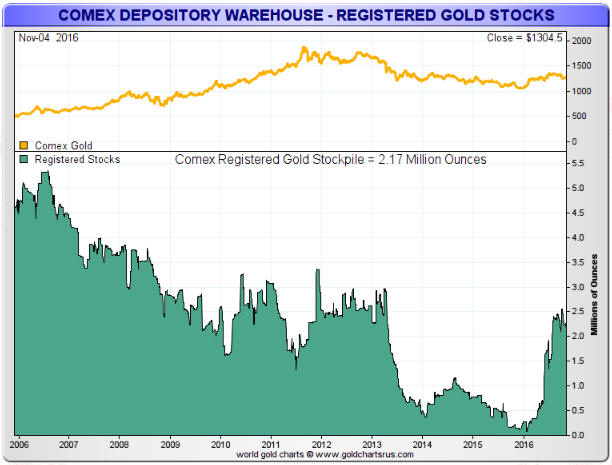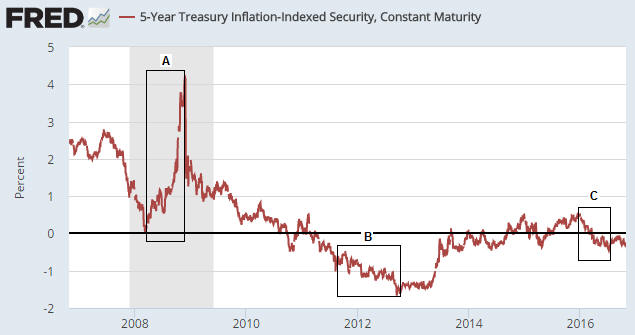The prices of US government debt securities have been falling since early-July and plunged over the past two weeks. This prompts the question: Where did all the money that came out of the bond market go?
It’s a trick question, because not a single dollar has left the bond market. The reason is that for every sale there has been an exactly offsetting purchase. For example, if Bill sells $100M of T-Bonds, then $100M of cash gets transferred from the account of the buyer (let’s call him Fred) to Bill’s account. After the transaction, Bill has $100M more cash and $100M less bonds while Fred has $100M less cash and $100M more bonds. There has been no net flow of money out of or into the bond market.
In general terms, no money ever goes into or out of any market. A market, after all, is just a place where people go to trade. A market can grow or shrink, but it is not an entity that receives or disgorges money. Furthermore, every transaction in a market involves an increase in demand and an exactly offsetting decrease in demand. For example, in the case of the hypothetical bond traders mentioned above, the transaction involved an increase in the demand for bonds on the part of Fred and an exactly offsetting decrease in the demand for bonds on the part of Bill. Or, looking at it from a different angle, it involved an increase in the demand for money on the part of Bill and an exactly offsetting decrease in the demand for money on the part of Fred.
Related to the fact that no money ever goes into or out of any market is the fact that apart from a relatively small physical float, all of the money in the economy is always in the banking system*. It just gets shuffled around between the accounts of buyers and sellers. This, by the way, is why the “cash on the sidelines” argument that is regularly made to support a bullish stock market forecast is nonsense. In effect, all of the money in the economy is always on the sidelines.
Why, then, do market prices rise and fall?
Market prices rise and fall because one side (the buyers or the sellers) become more eager than the other side. If buyers are generally more eager than sellers then the price will rise by the amount required to encourage enough new sellers and/or discourage enough buyers so that a balance is established, whereas if sellers are generally more eager than buyers then the price will fall by the amount required to encourage enough new buyers and/or discourage enough sellers to establish a balance.
That’s why it sometimes happens that the prices of ‘everything’ (equities, bonds, gold, commodities) trend upward or downward together. One price doesn’t have to go down in order for another price to go up, and prices in one market going down will never be the direct cause of prices in another market going up. Although it is certainly the case that rising/falling prices in one market can alter the motivations of buyers and sellers in another market. The price of gold, for example, is determined mostly by what’s happening to prices in the bond, currency and stock markets.
Clearly, then, US government bond prices have fallen simply because, on average, bond sellers over the past few months have been more eager/motivated than bond buyers, not because any money has come out of the bond market. The reason for the change in motivation is a good topic for a separate post.
*If governments and banks get their way, at some point in the not-too-distant future there will be no physical float and 100% of the money supply will be in the banking system.
 Print This Post
Print This Post

